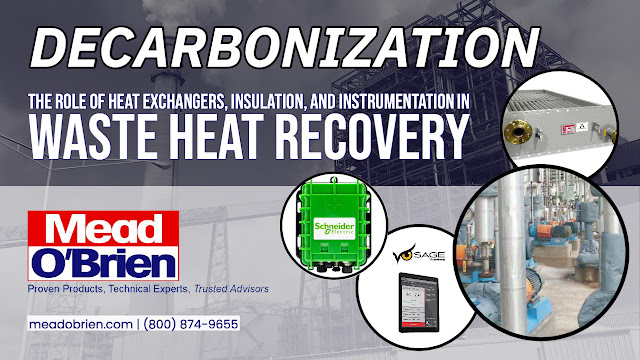Industrial plants often use a large amount of energy in their operations, which can result in significant greenhouse gas emissions, including carbon dioxide (CO2). As such, decarbonization efforts in these facilities are crucial in mitigating the impacts of climate change. One effective way to decrease carbon emissions is through energy efficiency improvements, which include recapturing waste heat and optimizing overall energy management. Here is an explanation of how waste heat recapture works and where how integration into an industrial plant's decarbonization efforts makes the most sense:
Waste Heat Recovery and Heat Exchangers: Heat exchangers are crucial in waste heat recovery. They enable heat transfer from a hot fluid (either gas or liquid) to a colder fluid without direct contact between the two. This process is critical for waste heat recovery, as it allows waste heat from processes or equipment to be captured and reused, thus reducing the total amount of energy needed to heat the colder fluid. The heat recovered has value in several ways - in other processes that require heat, generate electricity, or preheat feedstock, reducing the reliance on burning fossil fuels for these purposes, ultimately lowering CO2 emissions.
Insulation: Proper insulation can significantly reduce heat loss, improving overall process efficiency and reducing carbon emissions. By insulating valves, pipes, boilers, heat exchangers, and other equipment, heat is retained within the system, meaning less energy is needed to maintain desired temperatures, which translates into less fuel burned and, consequently, lower emissions. Additionally, insulation reduces the risk of heat-related injuries, which can be a safety benefit.
Process Instruments and Controls: The use of advanced process instruments, controls, and automation can optimize the energy efficiency of an industrial plant. These tools can help to more accurately monitor and control process conditions, including temperature, pressure, and flow rates, to ensure that processes operate optimally. They can also help to identify the source of waste heat and when it's generated, which can then be captured and reused. Implementing predictive maintenance strategies, which use data collected from process instruments to anticipate equipment failures before they happen, can also reduce energy consumption and CO2 emissions.
In addition to these methods, industrial plants should consider integrating renewable energy sources into their operations. For example, they could replace fossil fuel-based heating systems with solar thermal systems or use biogas produced from organic waste. Further, they can consider carbon capture and storage (CCS) technologies, which involve capturing CO2 produced from industrial processes and storing it underground, preventing it from being released into the atmosphere.
It is crucial to conduct regular energy audits to identify opportunities for improvement, monitor progress, and adjust strategies as necessary to ensure the successful implementation of these decarbonization measures. Training staff to understand and effectively implement these measures is equally important.
By adopting a comprehensive approach that includes waste heat recovery, improved insulation, using process instruments, and integrating renewable energy sources, industrial plants can significantly reduce their carbon emissions, helping to combat climate change.
